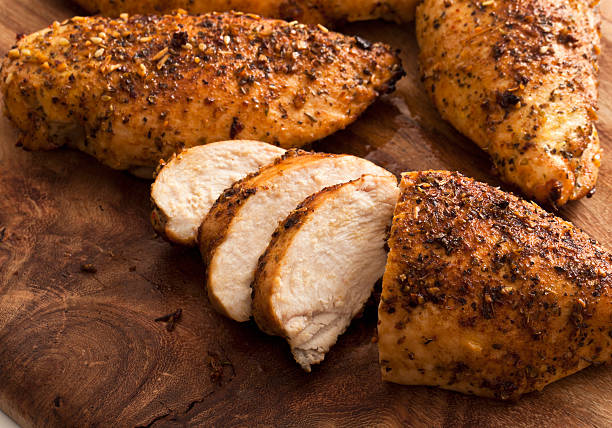When it comes to following a healthy diet, one of the key factors to consider is the amount of carbohydrates in the foods you eat. Many people are interested in reducing their carb intake, whether for weight loss, blood sugar control, or other health reasons. If you’re trying to cut back on carbs, you may be wondering how many carbs are in a chicken breast. After all, chicken is a popular protein source for people on low-carb diets, and it’s often recommended as a healthy choice for meal planning.
In this article, we’ll take a closer look at the carb content of chicken breasts and how it compares to other protein sources. We’ll also discuss the potential health benefits of including chicken in a low-carb diet, as well as some tips for incorporating it into your meals.
How Many Carbs in a Chicken Breast?
The carb content of chicken breasts can vary somewhat depending on the specific cut and cooking method. However, in general, a 3.5-ounce (100-gram) serving of raw, skinless chicken breast contains about 0.4 grams of carbs. This is a relatively small amount, especially compared to starchy foods like grains and legumes, which can contain several times more carbs per serving.
It’s worth noting that the carb content of chicken breasts can change slightly depending on how they are prepared. For example, breaded and fried chicken breasts may have slightly more carbs due to the added breading, while grilled or baked chicken breasts will have a similar carb content to raw chicken.
In addition to the small amount of carbs, chicken breasts are also an excellent source of protein. A 3.5-ounce serving of chicken breast provides about 31 grams of protein, which is more than half of the recommended daily intake for most adults. Protein is an important nutrient for maintaining muscle mass, repairing tissues, and supporting overall health.
Other Nutrients in Chicken Breasts
In addition to carbs and protein, chicken breasts also provide a range of other important nutrients. For instance, they are a good source of selenium, a trace mineral that is important for immune function and thyroid health. Chicken breasts are also a source of niacin, a B-vitamin that helps your body convert food into energy, as well as vitamin B6, which is necessary for the metabolism of proteins and carbohydrates.
Chicken breasts are also a source of essential fatty acids, including omega-3 and omega-6 fatty acids. These fats are important for maintaining heart health and brain function. Chicken breasts are relatively low in fat compared to some other protein sources, such as fatty cuts of beef or lamb, making them a good choice for people who are trying to reduce their intake of saturated fats.
Carb Comparison: Chicken Breast vs. Other Protein Sources
While chicken breasts are relatively low in carbs compared to many other foods, it’s still helpful to compare them to other protein sources to get a sense of how they fit into a low-carb diet. Here are the carb contents of a few common protein sources, per 3.5-ounce serving:
Chicken breast: 0.4 grams of carbs
Salmon: 0 grams of carbs
Tofu: 2.1 grams of carbs
Ground beef: 0 grams of carbs
Eggs: 0.6 grams of carbs
As you can see, chicken breasts are on the lower end of the carb spectrum, with only a small amount of carbs per serving. Salmon and ground beef have no carbs, while tofu and eggs have slightly more.
Another factor to consider is the size of the chicken breast. A larger chicken breast will naturally have more calories and protein, but it will also have a higher carbohydrate content due to the increased size. It’s important to pay attention to portion sizes when trying to control carbohydrate intake.
It’s also worth noting that the carbohydrate content of chicken breasts can vary based on the specific type of chicken. For example, organic, free-range chicken breasts may have a slightly higher carbohydrate content due to the different feed that is given to the chickens.
In conclusion, a raw, skinless chicken breast contains no carbohydrates. However, the preparation method and sides chosen can significantly increase the carbohydrate content of a chicken breast meal. To keep the carb count low, opt for low carb preparation methods and sides, and pay attention to portion sizes.

 Home
Home Health
Health Diet & Nutrition
Diet & Nutrition Living Well
Living Well More
More













